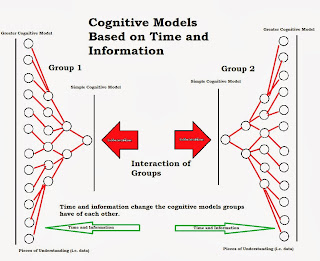 Adaptive learning is a methodology that has been applied to both civilian and military usage. Students engaging in adaptive training learn and growth through a sequence of difficulties and feedback that help them build better models of the materials and then apply knowledge to solving problems. A study of adaptive learning in the military found that certain personalities are more able to capitalize off of adaptive learning (Spain, Pries & Murphy, 2012).
Adaptive learning is a methodology that has been applied to both civilian and military usage. Students engaging in adaptive training learn and growth through a sequence of difficulties and feedback that help them build better models of the materials and then apply knowledge to solving problems. A study of adaptive learning in the military found that certain personalities are more able to capitalize off of adaptive learning (Spain, Pries & Murphy, 2012).As human beings we learn from our experience and from our social networks. We adapt and change to the environment around us. As new challenges and struggles make their way into our consciousness we continue to find ways to overcome them. As each new struggle and mastery occurs new knowledge is created.
The same methodology that occurs in our natural environment can also occur in civilian and military education. With the advent of online education it is possible to create adaptive training that becomes increasingly more difficult as one move through the course. As of yet the process is considered expensive and not easy to complete.
This expense is based upon the need to cater training to individual students. The student becomes the center of learning and that information which helps them adapt is provided on a case-by-case basis making higher levels learning possible as they incorporate that information. Newer information is built on previously learned information to develop higher forms of knowledge.
The information can be provided by an individual professor/trainer in a face-to-face medium or through an online system. An evaluation of the student's current understanding is made and then new information is provided to help build upon their current understandings to create a bridge to a higher levels of understanding. It is a fairly intensive process that is becoming more automated with new technology.
Adaptive learning may be intense but does produce some of the best learning. Those that are most likely to quickly adapt to situations score high on openness to experience and emotional stability. They are intellectually curious people who can control impulses to think more strategically about issues. The better able they are to experience, reflect and learn the more likely they are to learn new skills. The use of adaptive learning in both military and civilian arenas can help students to find a bridge between their past understandings and new knowledge that helps them navigate their environment.
Spain, R., Priest, H. & Murphy, J. (2012). Current trends in adaptive training with military applications: an introduction. Military Psychology, 24 (2).
